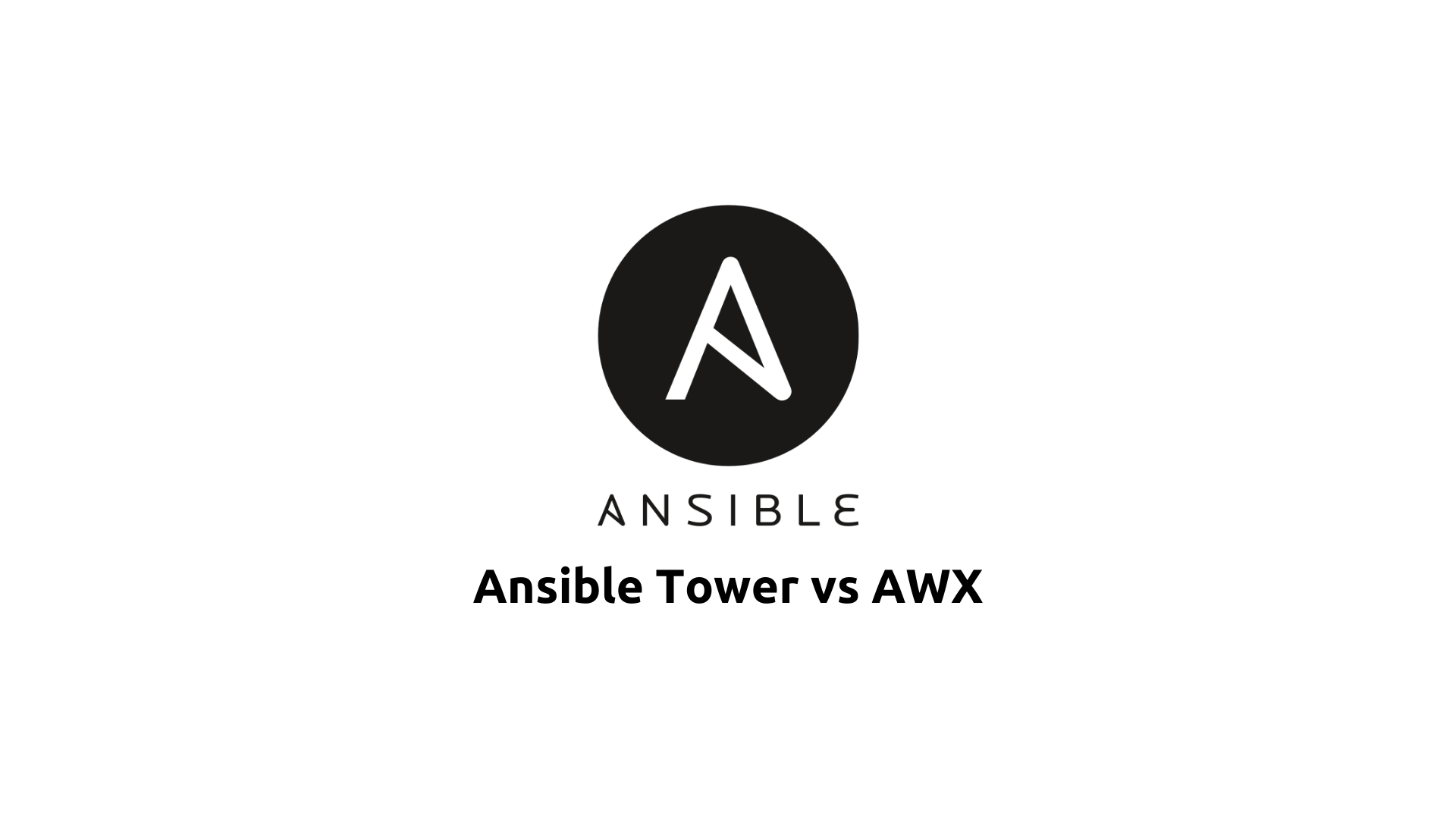Ansible Tower vs AWX
 Saurabh Adhau
Saurabh Adhau
Introduction
As the adoption of DevOps methodologies continues to surge, tools like Ansible have become increasingly popular for automating IT infrastructure and deployment processes. Within the realm of Ansible, there's a growing interest in exploring the capabilities of Ansible Tower and AWX as automation solutions. Ansible Tower serves as the commercial offering, while AWX stands as its open-source counterpart, both developed to streamline and enhance automation tasks. In this blog post, we delve deeper into the comparison between Ansible Tower and AWX, shedding light on their functionalities, architectures, and suitability for different organizational needs.
Understanding Ansible Tower
Ansible Tower emerges as the commercial variant of Ansible, equipped with a rich set of features tailored to facilitate the management and automation of IT infrastructure and deployment processes. Its defining characteristics include a web-based user interface and a REST API, providing a seamless experience for users to interact with Ansible's automation capabilities. The platform caters to the diverse needs of DevOps teams, offering functionalities that empower developers, system engineers, and operations personnel alike to collaborate effectively in automating tasks.
Under the Hood of Ansible Tower
At its core, Ansible Tower builds upon the foundation laid by the open-source Ansible platform, augmenting it with additional features to meet enterprise demands. Notable enhancements include robust team collaboration features, role-based access controls (RBAC), graphical inventory management, and comprehensive reporting capabilities. Moreover, Ansible Tower boasts seamless integrations with popular systems such as AWS, OpenStack, and VMware, further extending its utility in diverse environments. Technologically, Tower is crafted atop the Django web framework and leverages Celery, a distributed task queue, to ensure scalability and performance.
Exploring AWX
On the other hand, AWX emerges as the open-source counterpart to Ansible Tower, offering a similar suite of functionalities but without the associated licensing costs. Developed under the auspices of Red Hat, AWX aims to democratize automation by providing organizations with a free and accessible platform for orchestrating their IT processes.
Under the Hood of AWX
Similar to Ansible Tower, AWX is built upon the bedrock of the Ansible platform, inheriting its core capabilities while extending them to a broader audience. With a web-based interface and a RESTful API, AWX facilitates seamless automation workflows, enabling teams to collaborate efficiently and automate tasks at scale. Like its commercial counterpart, AWX is architected using the Django web framework and utilizes Celery for task execution, ensuring reliability and performance.
Distinguishing Features
While both Ansible Tower and AWX share fundamental similarities, there are key distinctions that delineate their offerings. AWX's open-source nature makes it an attractive option for organizations seeking to leverage Ansible's automation capabilities without incurring licensing expenses. Conversely, Ansible Tower offers additional features such as advanced role-based access control, support for custom APIs, and enterprise-grade support services, catering to the needs of larger enterprises with stringent requirements.
Conclusion
In conclusion, the comparison between Ansible Tower and AWX underscores the versatility and adaptability of Ansible as an automation platform. While Ansible Tower provides a comprehensive suite of features tailored for enterprise use cases, AWX offers a compelling alternative for organizations prioritizing cost-effectiveness and open-source solutions. Ultimately, the choice between Ansible Tower and AWX hinges on factors such as budgetary constraints, organizational requirements, and the need for additional features and support services. By understanding the nuances of each platform, organizations can make informed decisions that align with their automation goals and strategic objectives.
Subscribe to my newsletter
Read articles from Saurabh Adhau directly inside your inbox. Subscribe to the newsletter, and don't miss out.
Written by

Saurabh Adhau
Saurabh Adhau
As a DevOps Engineer, I thrive in the cloud and command a vast arsenal of tools and technologies: ☁️ AWS and Azure Cloud: Where the sky is the limit, I ensure applications soar. 🔨 DevOps Toolbelt: Git, GitHub, GitLab – I master them all for smooth development workflows. 🧱 Infrastructure as Code: Terraform and Ansible sculpt infrastructure like a masterpiece. 🐳 Containerization: With Docker, I package applications for effortless deployment. 🚀 Orchestration: Kubernetes conducts my application symphonies. 🌐 Web Servers: Nginx and Apache, my trusted gatekeepers of the web.